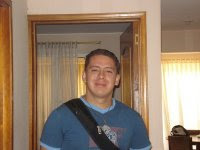
The name "Navajo" comes from the late 18th century via the Spanish (Apaches de) Navajó "(Apaches of) Navajó", which was derived from the Tewa navahū "fields adjoining a ravine". The Navajo call themselves Dine, which is translated to mean "the people" (most Native American groups call themselves by names that mean "the people"). Nonetheless, most Navajo now acquiesce to being called "Navajo."
Traditionally, like other Apacheans, the Navajo were semi-nomadic in the 16th century into the 20th century. Their extended kinship groups would have seasonal dwelling areas to accommodate livestock, agriculture and gathering practices. As part of their traditional economy, Navajo groups may have formed trading or raiding parties, traveling relatively long distances.
A Navajo man working as a tourist guide, in 2007, in Monument Valley, Arizona historically, the structure of the Navajo society is largely a matrilocal system in which only women were allowed to own livestock and land. Once married, a Navajo man would move into his bride's dwelling and clan since daughters (or, if necessary, other female relatives) were traditionally the ones who received the generational inheritance. Any children are said to belong to the mother's clan and be "born for" the father's clan. The clan system is exogamous, meaning it was, and mostly still is, considered a form of incest to marry or date anyone from any of a person's four grandparent’s clans.
Traditionally, like other Apacheans, the Navajo were semi-nomadic in the 16th century into the 20th century. Their extended kinship groups would have seasonal dwelling areas to accommodate livestock, agriculture and gathering practices. As part of their traditional economy, Navajo groups may have formed trading or raiding parties, traveling relatively long distances.
A Navajo man working as a tourist guide, in 2007, in Monument Valley, Arizona historically, the structure of the Navajo society is largely a matrilocal system in which only women were allowed to own livestock and land. Once married, a Navajo man would move into his bride's dwelling and clan since daughters (or, if necessary, other female relatives) were traditionally the ones who received the generational inheritance. Any children are said to belong to the mother's clan and be "born for" the father's clan. The clan system is exogamous, meaning it was, and mostly still is, considered a form of incest to marry or date anyone from any of a person's four grandparent’s clans.

No hay comentarios:
Publicar un comentario